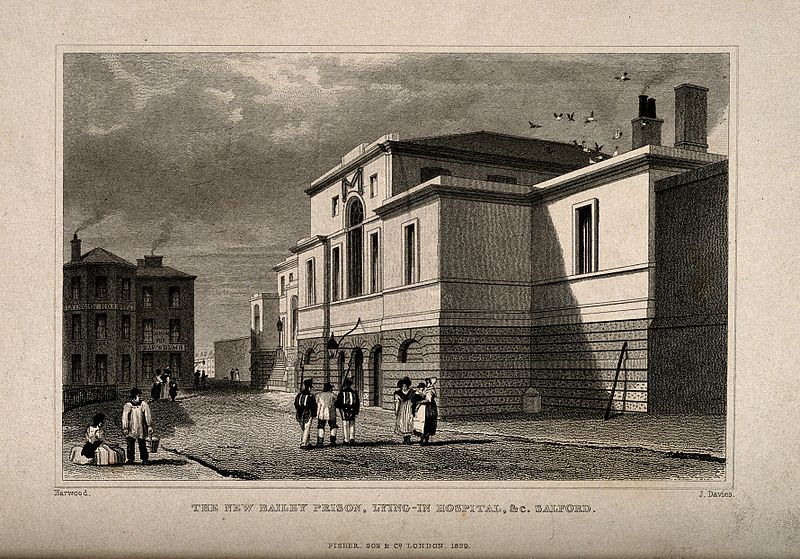
On this day in 1824 the treadmill punishment was introduced at New Bailey Prison Salford.
Treadmill punishment also known as ‘treadwheel’ or ‘everlasting staircase’, was a penal appliance introduced in 1818 by the British engineer Sir William Cubitt.
This device was designed in some cases to handle as many as 40 convicts.
These convicts were forced to step along a series of planks as part of their sentence.
It was a large hollow cylinder which rotated, it usually had wooden steps built around an iron frame.
The use of these treadmills was abolished in Britain by the Prisons Act of 1898.
Treadmills were originally a punishment used to harness human power on a giant wheel to grind grains; hence the name “treadmill.” pic.twitter.com/R7v72RzylZ
— SERIOUSLY STRANGE (@SeriousStrange) January 5, 2017
The New Bailey Prison’s foundation was laid down on the 22nd of May 1787 by Thomas Butterworth Bayley.
The prison was named after its founder, who was an English magistrate, agriculturist and philanthropist.
18 Feb 1824 The treadmill punishment was introduced at New Bailey Prison Salford which stood by the Irwell opposite Spinningfields. By 1840s, some sentences were only 3 days, when the inmate was washed and fed, causing the chaplain to call prison ‘little more than a public bath’.
— Philippa Vishnyakov (Cave) (@revealmcr) February 18, 2020
In January 2015, The Centre for Applied Archaeology and The University of Salford were commissioned by Phil Mayall (Muse Developments, acting on behalf of English Cities Fund) to undertake an archaeological excavation at the location of where New Bailey Prison was.
The excavation focused on three main areas: Male Felon Workshop, Male Felon Cell Complex and Yard areas:

According to University of Salford’s Archaeological Excavation Report, “There was evidence to suggest that both the Felon Cells and the Workshop buildings were extended eastwards. The mapping evidence suggests that this was no more than 2-3 years later, however the bricks seen in the Felon Cell extension were different in character to the first phase of building.”

“When the New Bailey Yard closed in the 1960s, whatever remained of the buildings were demolished and backfilled, the probable cast iron columns for the roof would have been dismantled and taken away. Much of the area was just sealed with a layer of MoT and tarmac and functioned as a car park until 2013.”














Recent Comments